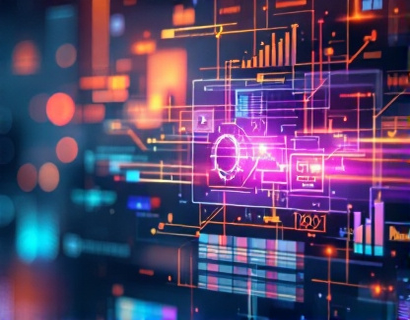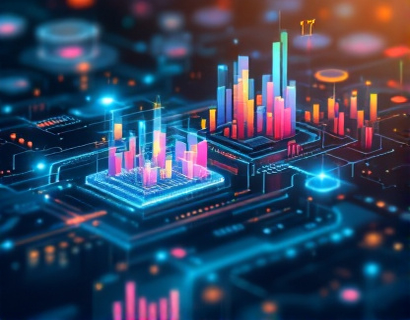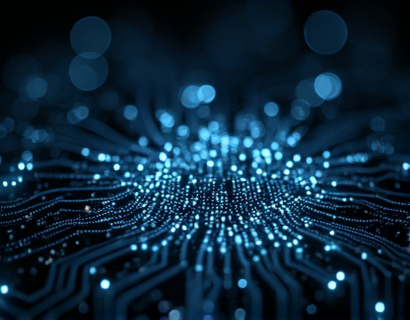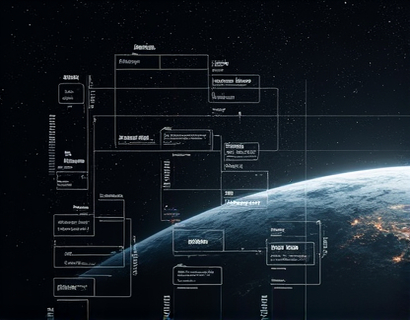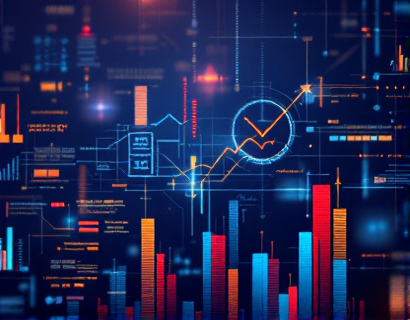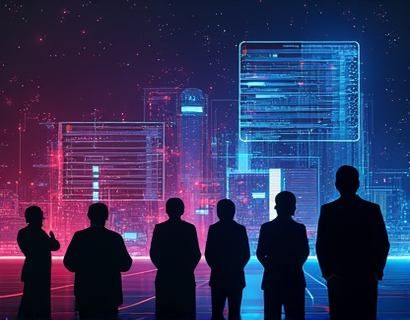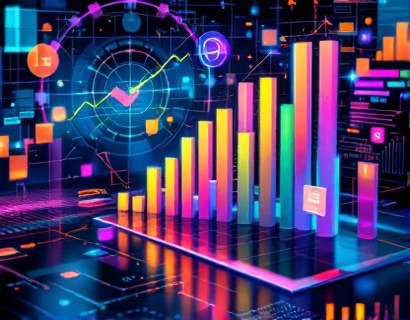Revolutionizing Decentralized Productivity: The Synergy of AI and Cryptocurrency
The intersection of artificial intelligence and cryptocurrency is giving birth to a new era of decentralized productivity tools. This fusion is not just an evolution but a revolution in how we approach app innovation and task streamlining. For tech professionals and early adopters, this synergy offers unprecedented opportunities to enhance efficiency and redefine the digital workspace. This article delves into the transformative power of AI and cryptocurrency, exploring how these technologies are converging to create next-generation solutions that are reshaping the landscape of decentralized applications.
The Rise of Decentralized Productivity Tools
Decentralized productivity tools are gaining traction as they offer a more transparent, secure, and user-controlled alternative to traditional centralized systems. These tools leverage blockchain technology to ensure data integrity, privacy, and ownership. The integration of AI further amplifies their capabilities, enabling smarter, more intuitive, and automated workflows. For instance, decentralized project management platforms are using AI to predict project timelines, allocate resources more efficiently, and even automate routine tasks, thereby reducing human error and increasing productivity.
AI-Driven Enhancements in Cryptocurrency Applications
Cryptocurrency applications are also benefiting immensely from AI advancements. Smart contracts, a cornerstone of blockchain technology, are being enhanced with AI to become more adaptive and responsive. AI algorithms can analyze vast amounts of data to optimize contract execution, ensuring that conditions are met more accurately and efficiently. Additionally, AI-powered trading bots are revolutionizing cryptocurrency markets by providing real-time analysis, predictive insights, and automated trading strategies. These bots can adapt to market conditions, learn from past trades, and make informed decisions, giving users a competitive edge in the volatile crypto market.
Enhancing User Experience through AI and Crypto
The combination of AI and cryptocurrency is not only streamlining backend processes but also significantly enhancing user experience. Decentralized applications (dApps) are becoming more user-friendly and accessible thanks to AI-driven interfaces. Natural Language Processing (NLP) and machine learning algorithms are powering chatbots and virtual assistants that can guide users through complex tasks, answer queries, and provide personalized recommendations. This level of interactivity and customization is crucial for tech-savvy individuals who demand seamless and intuitive digital experiences.
Decentralized Cloud Computing and AI
Decentralized cloud computing is another area where AI and cryptocurrency are making significant strides. Traditional cloud services often centralize data, making them vulnerable to security breaches and single points of failure. Decentralized cloud platforms, powered by blockchain and AI, offer a more robust and secure alternative. These platforms use AI to optimize resource allocation, ensuring that computational power is used efficiently and sustainably. Users can rent processing power and storage from a network of nodes, paying in cryptocurrency, and benefit from enhanced security and privacy.
AI-Powered Identity and Access Management
Identity and access management (IAM) is a critical component of any digital ecosystem. The convergence of AI and cryptocurrency is transforming IAM by providing decentralized and self-sovereign identity solutions. Users can control their digital identities using blockchain, with AI enhancing the security and usability of these identities. Biometric data, encrypted and stored on the blockchain, can be verified using AI algorithms, reducing the risk of identity theft and fraud. This approach not only empowers users but also simplifies the authentication process for developers and service providers.
Automated Workflows and Smart Automation
Automated workflows are a key benefit of integrating AI with decentralized systems. AI can analyze workflows, identify bottlenecks, and automate repetitive tasks, making processes more efficient and less error-prone. In the context of decentralized applications, smart automation ensures that tasks are executed according to predefined rules and conditions, without the need for intermediaries. For example, decentralized finance (DeFi) platforms use AI to automate lending, borrowing, and trading processes, providing users with faster and more transparent financial services.
Challenges and Considerations
While the potential of AI and cryptocurrency in decentralized productivity is immense, there are challenges that need to be addressed. Scalability remains a significant issue, as blockchain networks struggle to handle high transaction volumes. However, layer 2 solutions and more efficient consensus mechanisms are being developed to overcome this. Additionally, regulatory uncertainty and the need for standardization are hurdles that the industry must navigate. Ensuring user education and adoption is also crucial, as the complexity of these technologies can be daunting for newcomers.
Future Prospects and Innovations
The future of decentralized productivity, powered by AI and cryptocurrency, is bright and full of possibilities. As technology advances, we can expect more sophisticated AI algorithms that can handle complex decision-making and more seamless integration of decentralized systems. The rise of Web 3.0, a decentralized internet, will further accelerate the adoption of these technologies. Innovations such as decentralized autonomous organizations (DAOs) and tokenized governance models are set to redefine how communities and organizations operate, fostering greater collaboration and transparency.
Conclusion
The fusion of AI and cryptocurrency is revolutionizing decentralized productivity, offering transformative solutions that enhance app innovation and streamline tasks for tech professionals and early adopters. By leveraging the strengths of both technologies, we are witnessing the emergence of a new digital paradigm that is more secure, efficient, and user-centric. As the ecosystem continues to evolve, the potential for further innovations and applications is vast, promising a future where decentralized productivity is not just an option but the norm.










